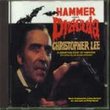| All Artists: Grieg; Debussy; Coleridge-Taylor, Nokuthula Ngwenyama (viola) Title: Ballade Members Wishing: 1 Total Copies: 0 Label: EDI Records Original Release Date: 3/2/2005 Re-Release Date: 3/6/2005 Genre: Classical Styles: Chamber Music, Forms & Genres, Short Forms, Instruments, Keyboard, Strings Number of Discs: 1 SwapaCD Credits: 1 UPC: 825346925929 |
Search - Grieg; Debussy; Coleridge-Taylor, Nokuthula Ngwenyama (viola) :: Ballade
 | Grieg; Debussy; Coleridge-Taylor, Nokuthula Ngwenyama (viola) Ballade Genre: Classical
Edvard Hagerup Grieg (1843 - 1907), the great Norwegian composer, had already entered retirement at ?Troldhaugen? outside Bergen with wife Nina when he began working on his Sonata No. 3 in C Minor for Violin and Piano, op.... more » |
CD Details
Synopsis
Product Description
Edvard Hagerup Grieg (1843 - 1907), the great Norwegian composer, had already entered retirement at ?Troldhaugen? outside Bergen with wife Nina when he began working on his Sonata No. 3 in C Minor for Violin and Piano, op. 45. Allegro molto ed appasionato juxtaposes passionate outbursts alongside brooding and tender phrases in its hefty exposition. The development is brief and employs an augmented deceptive recapitulation. An exciting coda completes the movement. The second movement, in ternary form, stands on its own in sheer beauty and depth. Many a musician admits to playing the sonata for this gem. Its middle section continues an established interplay of broad statements between the instruments, betraying playful facets of Norwegian folk music with melody and rhythm. Allegro animato begins with a rustic tune embellished by shimmering, and later deliberate, sextuplet accompaniment. It is binary form with a cantabile second section building towards dynamic climax. This is one of Grieg?s profound works, written towards the end of his life. Its depth can be attributed to both a slowed and more painstaking writing process as well as multiple battles with depression. His compositions exemplify an undying commitment to create a place and style for Norwegian musical language. That commitment greatly inspired contemporaneous French impressionists in their search for new sound. Maurice Ravel said, ?The generation of French composers to which I belong has been strongly attracted to his music. There is no composer to whom I feel a closer affinity - besides Debussy - than Grieg.? Ravel?s statement is a compliment indeed, as Claude-Achille Debussy (1862-1918) is considered the father of impressionistic music. Impressionism aims to evoke a mood, reflect an atmosphere, and capture a liminal moment with suggestion and allusion. A vestige of impressionism is apparent in Clair de Lune (Extrait de la ?Suite Bergamasque?), although it is not commonly referred to as such. Arranged here by R. Roelens for violin and piano, the first impulse is a silent strong beat, followed by an upward terrace of thirds establishing a melody gracefully moving off downbeats. The use of duples and triples elicit subtle rhythmic ambiguity, creating a dreamy effect. The middle section expands the gesture, utilizing downbeats in more certain terms as the melodic range expands. The return delicately transposes the melody an octave higher. A bastion of impressionism is Debussy?s most popular orchestral work, Prélude à l?après-midi d?un faune (Prelude to the Afternoon of a Faun), based on Mallarmé?s poem. Although significantly abridged, the Heifetz arrangement for violin and piano demonstrates Debussy?s rebellion against formal rules of harmony in his quest to develop a style that pleased his ears. Dubbed ?the rule of hearing,? it allowed him to experiment with different scales and textures. His exposure to a Javanese gamelan - an orchestra of mostly gongs and percussion - at the 1889 Paris exposition only encouraged him further. The use of dissonant tri-tones, traditionally considered ?il Diablo,? as a melodic skeleton give the opening statement a haunting quality. The piece explores nuances of shading and light with spaces of silence, a limited dynamic range, extensive tremolando and flourishing arpeggios in the piano for texture. The violin is legato throughout, expanding with octaves in the middle section, and con sordino at the end to emulate muted brass in the original score. The Ballade in C Minor, op. 73 for Violin and Piano by Samuel Coleridge-Taylor (1875 - 1912) is enchanting. Published in 1908 between Coleridge-Taylor?s second and third trips to the United States from his native England, the title hints at the strophic narrative song tradition dating from the Middle Ages. Its loose form accorded romantic composers an attractive structural freedom while maintaining a direct link to tradition. Instrumental ballades

 Track Listings (6) - Disc #1
Track Listings (6) - Disc #1